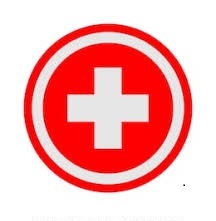There is no short cut to healthy weight toss. Losing weight takes commitment and a well thought-out plan. So, what is the science behind it, you may ask? Well, the only scientific mechanism that is responsible for weight loss is less calorie intake & more calorie burn /consumption. Healthy weight loss is achieved by making lifestyle changes in following four important aspects of life:-
I) Diet
II) Physical activity
III) Sleep
IV) Stress
Brace yourself, as we shall discuss all of them in detail.
Making the decision to lose weight by changing lifestyle, to become healthy is a big step & might be challenging as well. For this reason, it needs motivation as much as it needs a sincere commitment. So, ask yourself, what is your-driving force/motivation? Whether you have a family history of any weight-related disease, or want to start your own family or may be you just want to feel fit and better in your clothes; whatever the reason, it will help strengthen your commitment towards being healthy.
Once you have found your motivational force, set some realistic goals and reward yourself all along the journey. Feel confident that you are making an effort, because not many people are able to do so. Remember that realistic goals, no matter how small they are, are the only achievable goals. Not to forget, small changes every day can lead to big results in the long run.
Moreover, by achieving your realistic goals, you will feel positive about your progress and motivated to continue. On the other hand, setting unrealistic goals, such as losing 20 pounds in 2 weeks, can leave you feeling defeated and frustrated. Being realistic also means expecting occasional setbacks, due to reasons like holidays, illness or longer work hours. But, that should not be your limiting factor. Try to bounce back as quickly as possible. Revisit your goals and evaluate your progress regularly. Assess which parts of your plan are working well and which ones need changes.
After this point, you are ready to get started on your journey to weight loss. So, first things first:
I) Diet, i. e what you eat: What changes do you need to bring in your diet in order to lose weight in a healthy and sustainable way? To answer that, you will need to know the composition of your diet.
Our diet consists of 3 major components and bringing in small changes in these 3 components is the key to healthy weight loss. These components are:
- Carbohydrates
- Fats
- Proteins
Now, Let us briefly talk about these components:
- Carbohydrates: They are the most important source of our body’s energy. So, they need to be chosen wisely during weight loss. Because all carbohydrates are broken down into sugar or glucose; the rate at which this break down happens is called glycaemic index, GI. Foods with high GI turn to glucose fast, causing rapid rise in the levels of hormone Insulin. Insulin converts excess glucose into fat and stores it in the body, thus contributing to unwanted weight gain.
On the other hand, foods with lower GI result in lower insulin levels and minimal conversion of glucose into fat. In addition, low GI foods cause blood sugar levels to rise and fall slowly, thus help you feel fuller for longer. This helps control appetite and lose weight.
So, which foods should be limited and which should be preferred?
As a rule, foods with high GI should be limited and foods with low GI should be preferred.
Common food products with high GI are:-
Sugar and sugar foods
Sugary soft drinks
White bread
Potatoes
White rice
Common foods products with medium or low GI index are:-
Fruits & vegetables
Pulses and lentils
Wholegrain foods
Pasta
Plain Yogurt
Milk and cheese
2. Fat: Fat in itself isn’t the enemy to weight loss, but which type and how much of fat you choose to eat is. What does that mean? Including the right kind and amount of fat in your diet is the key to successful weight loss. Why? Because, fat is incredibly satiating as it takes longer time to digest. So, eating even a small amount of fat helps you feel fuller for longer and makes you eat less overall.
The other important thing is that you should know what is a good/heathy fat and what is a bad/unhealthy fat. Good/healthy fat is medically known as unsaturated fat. Commonly present in:
Nuts, plant based oils, fish, eggs, cheese, dark chocolates and fruits.
Bad /unhealthy fat is medically called saturated fat. Commonly present in fatty meat, butter, ghee, creams, chocolate pastries, cakes and biscuits. In nutshell, it is best to reduce your overall fat intake and replace saturated fats with unsaturated fats.
3. Proteins: Proteins can regulate appetite hormones to help you feel full and avoid excess eating. How? By decreasing hunger hormone Ghrelin and increasing satiety hormone Leptin.
So, eating more proteins will not only reduce your cravings but the desire to snack late at night as well. Proteins are also important to build muscle mass, which is an essential requirement for calorie consumption.
Which proteins to choose?
As a rule, choose protein sources that are lower in saturated fat and calories, such as; lean meat, seafood, beans, soy, low-fat dairy, eggs, nuts and seeds.
II) Physical activity: The second most important aspect of life that needs change in order to achieve healthy weight is physical activity. Being active is a key to staying fit and healthy. Exercise has been rightly called the miracle cure, we have all been waiting for. Whatever the age, there is strong scientific evidence that being physically active can help you lead a healthier and happier life. Not only does it help in weight loss, but people who exercise regularly have a lower risk of developing many long-term conditions such as heart disease, diabetes, stroke and some cancers. So try getting more active.
Medical research shows that physical activity can also boost self-esteem, mood, sleep quality as well as reduce the risk of stress, depression, dementia and Alzheimer’s disease.
How does it work?
When you do physical activity, you burn your calories to get energy. So, more calories burnt means more consumption of body fat stores and ultimately weight loss.
Remember: Exercise helps burn off the excess calories that can’t be shed through diet alone.
What is the recommended healthy physical activity?
In general, for any type of activity to benefit your health, you need to be moving quick enough, to raise your HR, breathe faster and feel warmer. WHO recommends for every adult to do at least 150-300 minutes of physical activity over a week. The more you do, the better. Keep in mind everyone is different. What works for someone else might not be right for you; just because your neighbor lost weight apparently by running, does not mean, running is the best option for you. So, pick up any activity you enjoy the most, like walking, running, cycling, swimming, tennis, or dancing. Fit that into your routine and continue with it to achieve your goal.
III) Sleep: Getting a good night’s sleep is one of the best things to maintain a healthy weight and overall health. The minimum recommended daily sleep hours for a normal healthy adult is 7 hrs.
Studies show that poor sleep is associated with weight gain and other health disorders. Why?
Because insufficient or poor-quality sleep slows down the process in which body consumes calories, known as metabolism. As a result, a body may store unused energy as fat. Poor sleep can also increase the production of 2 hormones: Insulin and Cortisol. Both of them also lead to fat storage. In addition, sleep also affects the regulation of the appetite controlling hormones: Leptin and Ghrelin, making you feel hungry throughout the day.
Moreover, it is not only the duration of sleep, but also the time you go to bed, which plays a significant role in achieving healthy weight loss. Why?
Because, the extra time spent awake increases your opportunities to eat, thus leading to weight gain.
Most of us cannot control the time we have to get up, but we can control the time we go to bed.
IV) Stress: Stress triggers the release of appetite increasing hormones, such as adrenaline and cortisol, which makes you eat more. There is a reason why stress eating is called “comfort eating”. So, instead of reaching out for food to feel better, try getting a hug from your loved ones, play with your pet, or just take a walk.
Moreover, there are some important steps that need to be followed in general. These are:
- Tracking: Tracking your food will make you aware of what and when you are eating, thus helping you avoid mindless munching.
- Eating regular meals: Eating at regular times during a day will help your calories burn at a faster rate. It will also reduce your temptation to snack on foods high in fat and sugar.
- Do not skip breakfast: Skipping breakfast will not help you lose weight. Instead, you might miss out on essential nutrients and end up snacking more throughout the day.
- Use a smaller plate: Using smaller plates can help you eat smaller portions. By using smaller plates and bowels, you may be able to gradually get used to eating smaller portions without going hungry. It takes about 20 mins for stomach to tell brain it is full. So, eat slowly and stop eating before you feel full.
- Do not ban foods, especially your favorite ones. Because, banning foods will only make you crave them more. Moreover, there is no reason, why you cannot enjoy an occasional treat as long as you stay within your recommended calorie limits.
- Do not stock junk food, because it will only increase your temptation, knowing that it is readily available at home.
- Drink adequate amount of water: Water is a healthy and cheap choice for quenching your thirst at any time. It has no calories and no sugars.How much to drink? The medically recommended amount is daily intake of about 13 cups (around 3 litres) for heathy men and 9 cups (over 2 litres) of fluids for heathy women. Good news to you is, that water, lower-fat milk and sugar free drinks including tea & coffee all count. So, at any point of the day if you do not like the plain taste of water, add a slice of lemon or heat the water and infuse a tea bag or some coffee and enjoy being healthy.
- Eat adequate quantity of fruits and vegetables: Fruits and vegetables are low in calories and fat and high in fibres, which is the perfect balance of these 3 essential ingredients for successful weight loss. They also contain plenty of vitamins and minerals, which are needed for the healthy working of body.
- Reduce intake of sugary and ultra-processed/refined foods: These foods are quick to digest and they convert to glucose rapidly. Excess glucose enters blood stream and causes the release of hormone Insulin. Insulin promotes conversion and storage of this excess glucose into fat inside the body and contributes to weight gain.
- Last but not least, cut down on alcohol: A standard glass of wine can contain as many calories as a piece of chocolate. Overtime, drinking too much can easily contribute to weight gain.
It is important to remember that there are no quick fixes when it comes to weight loss. It is about a safe, healthy and sustainable journey, which one should be determined to take and live through.
Stay healthy, stay happy. Being healthy is always cool!






